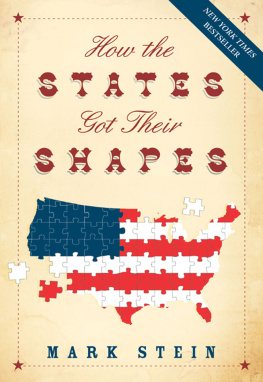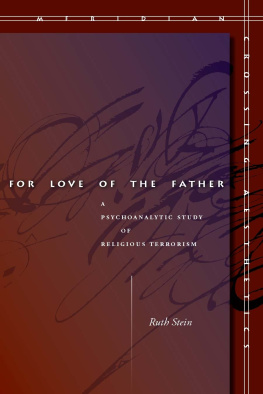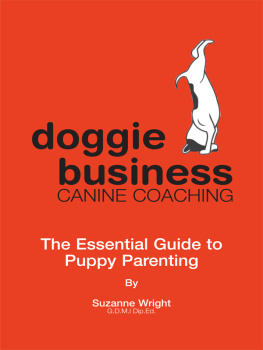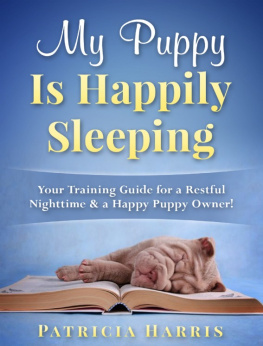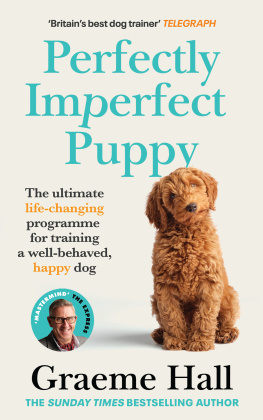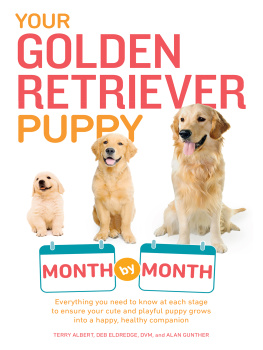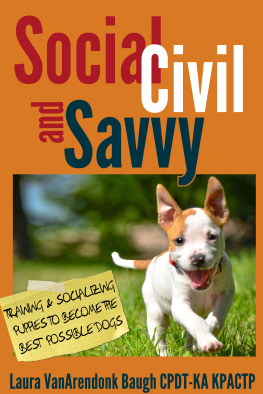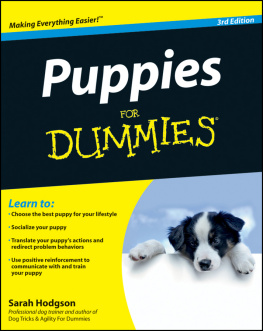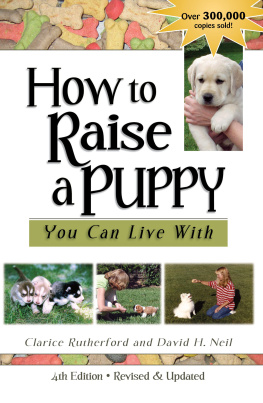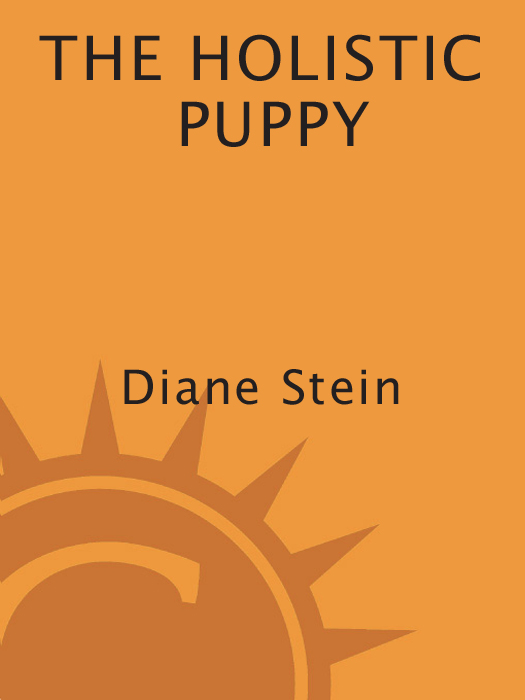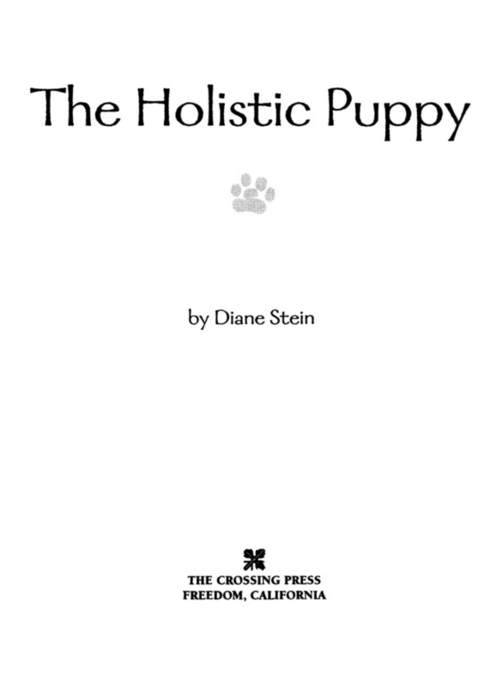Copyright 1998 by Diane Stein
Interior design by Victoria May
No part of this publication may be reproduced or transmitted in any form or by any means, electric or mechanical, including photocopy, recording, or any information storage and retrieval system now known or to be invented, without permission in writing from the publisher, except by a reviewer who wishes to quote brief passages in connection with a review written for inclusion in a magazine, newspaper, or broadcast. Contact The Crossing Press, Inc., P.O Box 1048, Freedom, CA 95019.
All rights reserved.
Puppy Socialization Chart, : Reproduced from THE PERFECT PUPPY: How to Raise a Well-Behaved Dog copyright (c) 1995 The Readers Digest Association, Inc. Used by permission of the The Readers Digest Association, Inc. Used by permission of the The Readers Digest Association, Inc.
Visit our Web site on the Internet: www.crossingpress.com
The alternative healing methods of this book are not meant to take the place of expert veterinary care. When your pet is ill, consult a holistic veterinarian.
The author and publisher accept no responsibility for any loss, damage, injury, or inconvenience sustained by any person or pet as a result of using the training methods outlined herein this book.
Library of Congress Cataloging-in-Publication Data
Diane, Stein, 1948
The holistic puppy : how to have a happy, healthy dog / by Diane
Stein for the Crossing Press.
p. cm.
eISBN: 978-0-307-78365-3
1. Puppies. 2. PuppiesHealth. 3. PuppiesDiseasesAlternative treatment. 4. Dogs. 5. DogsHealth. 6. DogsDiseasesAlternative treatment. 7. Veterinary holistic medicine.
1. Title.
SF425.S74 1998
636.70893dc21
98-26917
v3.1
For Copper, My Philosopher,
Kali, My Best Girl
and for Sue
acknowledgments
Books are written alone, but they usually cannot be written without the help of others. I would like to thank holistic veterinarians Wendy Thacher-Jensen, DVM, and Karen Bernstein and Larry Bernstein, VMD, for their ideas and protocols on puppy veterinary care, particularly on the controversial subject of vaccinations. Dr. Bernstein provided the very important Dr. Pitcairn articles on vaccinosis. Luc Chaltin and Miki Bell of Newton Homeopathic Laboratories and Allen Kratz, Pharm.D., of HVS Laboratories, also contributed vaccination and vaccinosis antidote information. Central Animal Hospital, St. Petersburg, FL, offered information on standard puppy protocols. Karen Silverman and Prince tried diatomaceous earth for worming and told me that it works. Corinne Nichols reminded me about puppy (and kitty) nicknames.
Kali and Copper supervised the whole writing process. Copper said it was his job to do that and Kali does anything Copper does.
contents
illustrations
The Dogs Major Facial Expressions
The Dogs Tail Positions
Puppy Socialization
Using a Training Collar
Holding the Leash
CHAPTER 1
kali, copper & co.
A nimals are our teachers, the bridges between ourselves and the Earth. Early and pre-industrialized people lived intimately and cooperatively with the Earth and with animals, first with the wild creatures they hunted for survival and later more closely with the farm animals they had to tend. Today most people do not live in cooperation with the Earth and with her creatures; they have traded living nature for inanimate and cold technology. Often our only remaining link to nature and the planet is through the pets we share our homes with, primarily dogs and cats. The pets that most fully interact with humans, that admit humans intimately into their own families and packs, are dogs. Many peoples only link with the living Earth, therefore, is our dogs.
Integrating the Pack and the Family
Dogs admit people into their families. Humans believe that its the other way around, but this is not true from the dogs point of view. From the very start, even the smallest puppy creates its canine social order from the humans who adopt it. She begins immediately to create a dog pack in her new surroundings. Every canine instinct drives the puppy to do this. Her canine pack, taken from her when she leaves her mother and litter mates, is exchanged for a human family, since cooperative pack society is the only reasonable life order for a dog. If the puppy doesnt have this order with others of her kind, she will create it wherever she lives. This is the reason humans choose to live with dogs.
From the human point of view, the new puppy must adapt to human ways, she does not live with a pack of dogs. In living together, humans and animal become a new kind of inter-species order, a canine-human pack-family. The puppy can no longer live entirely by dog-pack rules but must also learn human ones. She must be house-trained, must learn to respect human property and all human be-ings, must accept restraint and walk quietly on a leash, must obey a variety of rules and commands, and must learn to live in harmony with her people and with any other animals that also live in the home. By training a puppy with the understanding that the human family is the dogs pack, the puppy can be taught a social order that she can understand and cooperate with, and she then becomes a joy to live with. With this understanding by both dog and humans, the puppy becomes a full member of the human family and the family becomes the puppys canine pack, as well. The mutual exchange brings humans back into cooperative contact with animals and the Earth, and gives the puppy the social order/family/pack she is happiest and healthiest living in.
It is this ability to create a human-canine pack together that makes dogs fit so completely into human life. No other animal lives so intimately with people. No other animal has as much to teach us about harmony, loyalty, cooperation, dignity, and hard work, and about creating a stable society as do dogs. By honoring the dogs point of view and raising the new puppy in accordance with it, people and animals learn to relate peacefully and easily. They learn about each other, about creating a family, and about what co-creative life on Earth means. The arrangement helps both dogs and people to evolve physically, emotionally, mentally, and spiritually. Neither species has less to teach or more to learn than the other, unless it be that humans have much more to learn from dogs.
My training and education in pack and family life has come over twenty-five years from five superior Siberian Husky dogsCinde, Tiger, Dusty, Copper, and Kali. Cinde and Tiger were show animals, with Cinde a retired breeder when I got her. Dusty was born in my kitchen from the only litter I myself bred, and Copper and Kali were purebred pound rescues who had both been badly abused. Each dog came to me with his or her own way of approaching life and of creating a family and a pack. Each had a part in training and socializing the dogs that came to me later, as I have usually lived with more than one animal at a time. Each has been a comfort, friend, and family member to me, a more-than-pet whose life I have fully cherished and protected to the best of my ability. They all have taught me patiently, wisely, and well.





